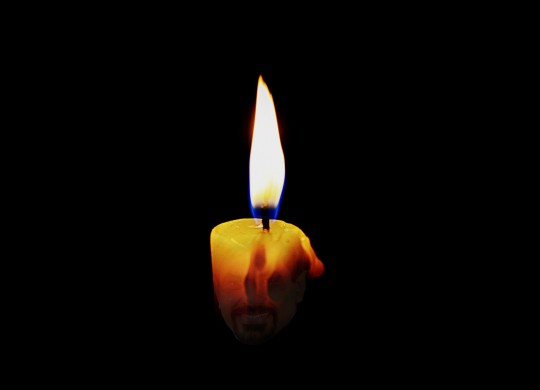Vision!

There’s a new Bond movie on the horizon: Spectre. Maybe that’s why “Science for the Masses” announced a recent finding that sounded like it came right out of Q’s lab.
I know nothing about Q’s lab, Fleming’s fictional R&D division of the British Secret Service. Nor do I know anything about “Science for the Masses” that describes itself thus:
Science for the Masses is a research group [operating out of Tehachapi, California] composed of professionals in research, the health care industry, and technical design. We operate independently of any university, college, or government agency. Our mission is to aid in the development of ‘citizen science’; we want to see the tools and resources necessary to perform scientific research made available to anyone that wants them. To this end, all of our research is and will be published free and open source, and will be repeatable by the layperson—meaning no multimillion dollar lab equipment.”
In any case, their recent announcement was intriguing. They claim to have discovered eye drops that temporarily enable night vision! They theorized (speculated?) that Chlorin e6, a chlorophyll analog and a naturally occurring photosensitizer found in algae, green plants, deep sea fish, etc., can enhance eyesight in low-light environments. (It has apparently been tried intravenously in the past as a treatment for night blindness.)
Said Jeff Tibbets, the lab’s “medical expert and team medical officer”:
There are a fair amount of papers talking about having injected it in models like rats and it’s been used intravenously since the 60s as treatments for different cancers. After doing the research, you have to take the next step.”
The “next step” involved persuading Gabriel Licina, the “biochem researcher and team financial officer” for Science for the Masses, to undergo a one-man clinical trial.
[BTW, the website for “Science for the Masses” lists only Tibbetts and Licina as “our core team.” We can now add another portfolio for Mr. Licina: “team guinea pig.”]
So 50 microliters of the good stuff (Chlorin e6) was dripped into said guinea pig’s eyes.
It seems the results were instantaneous. Within an hour, the subject could distinguish shapes from 30 feet way in the dark, and later even at greater distances.
Exulted Licina:
We had people go stand in the woods. At 50 metres [150 feet], I could figure who they were, even if they were standing up against a tree.”
Yup, there was a control group (four individuals). But they, without Chlorin e6 were accurate only a third of the time. Mr. Licina hit the bulls eye all the time.
And yup, they confess that “more testing will need to be done on this particular project. Current testing done was subjective in nature.”
Unfortunately, by the next day, everything returned to normal for Mr. Licina.
This week of Lent we remember that our eyes were blind—blind to the things of God, spiritually blind. But God in his mercy, opened our eyes. That we may see the light of God in Jesus Christ who died for the sins of the world and rose again the third day.
The people who walk in darkness will see a great light;
Those who live in a dark land, the light will shine on them.
Isaiah 9:2
We’ve seen the light!
For my eyes have seen Your salvation.
Luke 2:30
That’s what the celebration of Easter is all about!
“Everyone who beholds the Son and believes in Him will have eternal life.”
John 6:40
“I once was lost, but now am found;
Was blind, but now I see!”
John Newton (1779)
Happy Easter!











 Abe Kuruvilla is the Carl E. Bates Professor of Christian Preaching at The Southern Baptist Theological Seminary (Louisville, KY), and a dermatologist in private practice. His passion is to explore, explain, and exemplify preaching.
Abe Kuruvilla is the Carl E. Bates Professor of Christian Preaching at The Southern Baptist Theological Seminary (Louisville, KY), and a dermatologist in private practice. His passion is to explore, explain, and exemplify preaching.
2 Comments
Maybe Jesus’ spit contained Chlorin e6!
John 9:6
☺